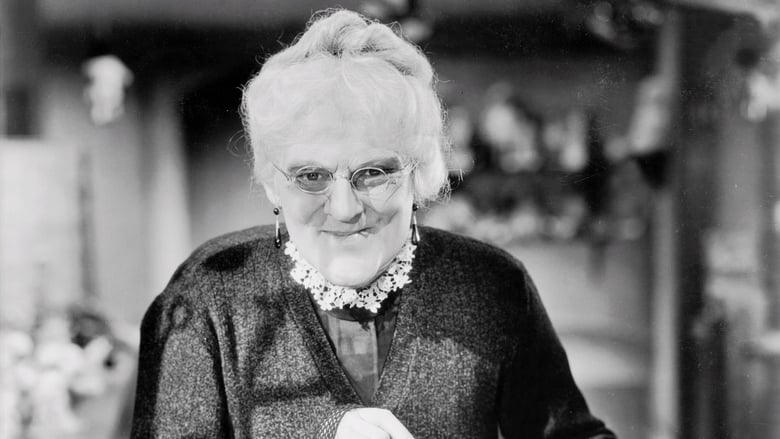“The Devil-Doll” (1936) is a thrilling and imaginative movie directed by Tod Browning. In this unique horror story, an innocent man, Paul Lavond (Lionel Barrymore), seeks revenge using his scientific invention that allows him to shrink down to the size of a doll. With his newfound power, he manipulates dolls and brings them to life, using them as his secret weapons against those who wronged him. This film combines elements of suspense, fantasy, and revenge as it unveils a tale that is both eerie and beguiling.

CLICK HERE🡇🡇🡇📺_Watch The Devil-Doll 1936 English Subtitles_
Review
“The Devil-Doll: A Frightful Masterpiece that Transcends Time”
Introduction:
In the realm of horror cinema, there are few films as captivating and visionary as “The Devil-Doll.” Released in 1936, this beguiling tale has stood the test of time, leaving an indelible mark on the genre. With its gripping storyline, impeccable acting, and awe-inspiring cinematography, it’s no wonder that this film has become a timeless classic.
Plot:
“The Devil-Doll” tells the haunting tale of Paul Lavond, a wrongfully imprisoned man seeking revenge. After escaping from prison with a fellow inmate, they stumble upon a secret formula that allows them to shrink people down to doll size. Paul hatches a daring plan to exact revenge on those who have wronged him using an army of living dolls. As he navigates a world of secrets and shadows, he must confront his own inner demons and question his thirst for vengeance.
Casts:
At the helm of this gripping narrative is Lionel Barrymore, who delivers an electrifying performance as Paul Lavond. His portrayal brings depth and complexity to the character, captivating audiences with his nuanced approach to revenge. Alongside him is Maureen O’Sullivan as Lavond’s daughter Lorraine—her presence adds both vulnerability and strength to the film.
Filming & Cinematography:
“The Devil-Doll” showcases breathtaking cinematography that sets it apart from other films of its time. Director Tod Browning creates an atmosphere dripping with suspense by utilizing intricate camera movements and evocative lighting techniques. His masterful incorporation of Dutch angles adds an air of disorientation and unease.
Dialogue & Characters:
The dialogue in “The Devil-Doll” is both thought-provoking and atmospheric—an essential element that deepens our connection with the characters. The twisted exchanges between Paul Lavond and his tormentors highlight the sheer psychological complexity of the film. Each character is meticulously crafted, leaving an indelible mark on the audience’s psyche.
Score & Popularity:
The haunting musical score composed by Franz Waxman adds an eerie and immersive dimension to the film. The evocative melodies effortlessly heighten the tension, keeping viewers on the edge of their seats.
History & Development:
“The Devil-Doll” holds a significant place in cinematic history, showcasing Browning’s signature style and his fascination with the macabre. Coming eight years after his iconic film “Freaks,” this movie further solidifies his status as a visionary director unafraid to push boundaries.
Evaluation & Awards:
Critics lauded “The Devil-Doll” upon its release for its groundbreaking storytelling and captivating performances. Although it did not receive significant accolades during its time, this film has since garnered a well-deserved cult following.
Opinion & Analysis:
“The Devil-Doll” transcends conventional horror tropes by exploring themes of revenge, redemption, and moral ambiguity. This thought-provoking approach elevates it from being a mere scare-fest to a haunting examination of human nature.
Scenes & Special Effects:
One of the most memorable scenes in “The Devil-Doll” occurs when Paul Lavond uses miniature dolls to commit a series of murders—a testament to Browning’s genius as both a director and visual storyteller. The meticulous attention to detail in these special effects remains awe-inspiring even by today’s standards.
Gossip & Criticism:
Despite its stellar reputation among horror aficionados, “The Devil-Doll” faced criticism upon release for its unsettling subject matter and unconventional narrative structure. Nonetheless, this controversy only served to fuel public interest, cementing the movie’s status as an enduring classic.
Production & Crews:
Behind every great film lies an army of skilled individuals dedicated to bringing the director’s vision to life. From talented film crews to the brilliant scriptwriting of Garrett Fort and Guy Endore, each member of the production team played an immense role in creating this haunting masterpiece.
Soundtrack & Sound Design:
The sound design of “The Devil-Doll” remains an unsung hero, effectively immersing viewers in its eerie world. The chilling ambience juxtaposed with Waxman’s mesmerizing score evokes a sense of dread that lingers long after the final credits roll.
Conclusion:
“The Devil-Doll” stands as a testament to the brilliance of Tod Browning and his ability to create timeless horror cinema. From its captivating storyline to its masterful cinematography, this film continues to captivate audiences with its unflinching exploration of darkness. As Seth Godin would say, “In an era where trends come and go, ‘The Devil-Doll’ remains a frightful masterpiece that transcends both time and convention.”
Technical Data

- Release : 1936-07-10
- Runtime : 78
- Genre : Horror, Science Fiction
- Cast : Lionel Barrymore as Paul Lavond, Maureen O’Sullivan as Lorraine Lavond, Frank Lawton as Toto, Rafaela Ottiano as Malita, Robert Greig as Emil Coulvet
- Crew : Tod Browning as Director, Tod Browning as Producer, Tod Browning as Screenstory, Franz Waxman as Original Music Composer, Erich von Stroheim as Screenplay
- Revenue : 0
- Budget : 0
- Company : Metro-Goldwyn-Mayer
- Popularity : 5.794
- Summary : Wrongfully convicted of a robbery and murder, Paul Lavond breaks out of prison with a genius scientist who has devised a way to shrink humans. When the scientist dies during the escape, Lavond heads for his lab, using the shrinking technology to get even with those who framed him and vindicate himself in both the public eye and the eyes of his daughter, Lorraine. When an accident leaves a crazed assistant dead, however, Lavond must again make an escape.
- Tagline : Greater Than “The Unholy Three”
